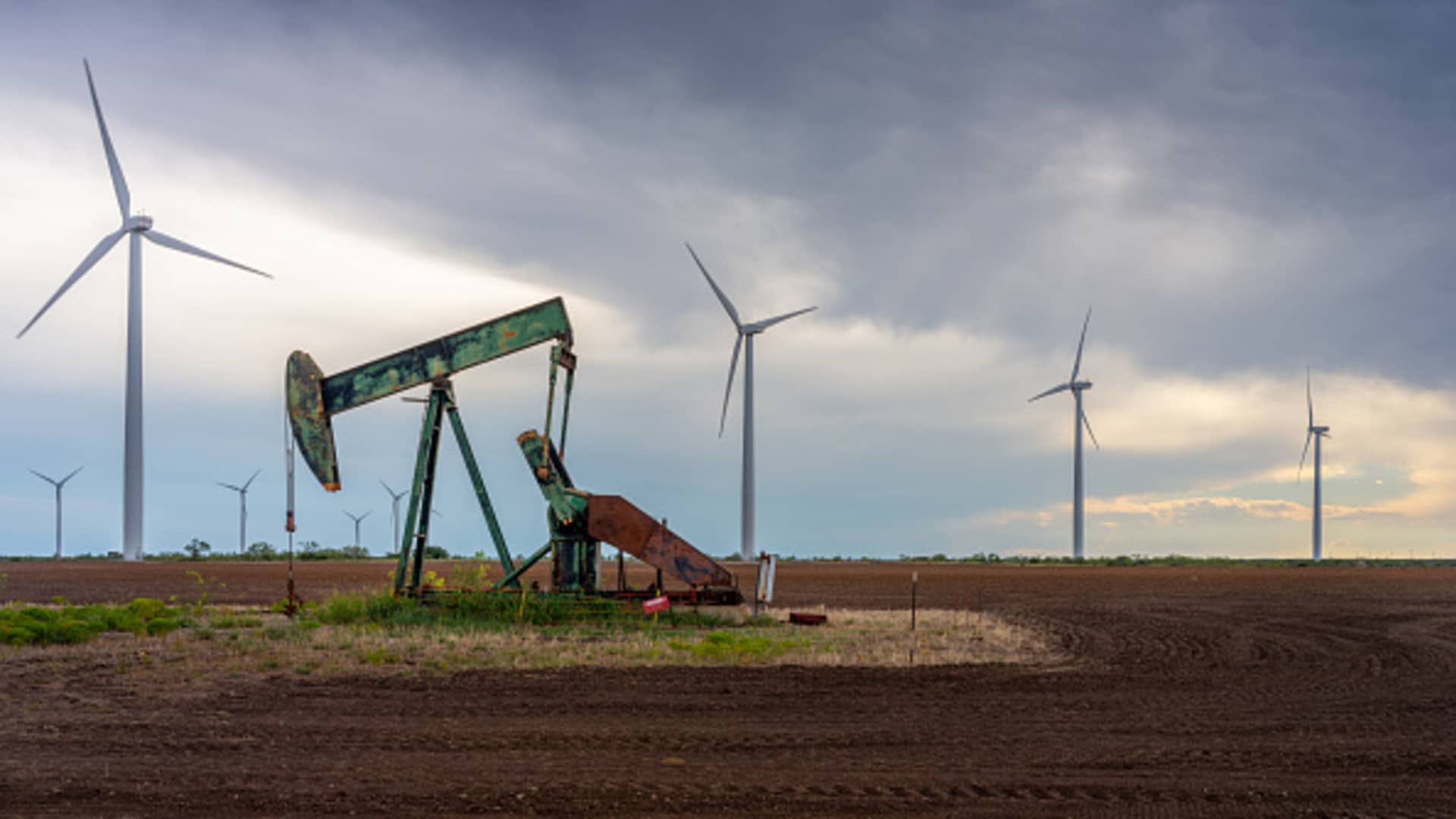An oil pumpjack is seen close to a discipline of wind generators on October 04, 2023 in Nolan, Texas.
Brandon Bell | Getty Images
OPEC on Monday raised its medium- and long-term forecasts for world oil demand.
The oil producer group mentioned the crude sector would require a whopping $14 trillion in funding whether it is to meet this upswing, even amid a fast enlargement of renewable power applied sciences.
OPEC’s long-term forecast for world oil demand diverges from that of the International Energy Agency, the world’s main power watchdog. OPEC and the IEA, each massive names in the power trade, are at present locked in a war of words over peak oil demand.
In its 2023 World Oil Outlook, OPEC mentioned it expects world demand to attain 116 million barrels per day (bpd) by 2045, up from 99.6 million bpd in 2022 and roughly 6 million extra bpd than it predicted in final yr’s report.
OPEC made clear that there is potential for this bounce to be even increased, too. The progress is probably going to be fueled by India, China, other Asian nations, Africa, and the Middle East.
For its long-term oil demand forecast to be met, OPEC mentioned oil sector investments of $14 trillion, or round $610 billion on common per yr, could be wanted. The group mentioned it’s “important” that these investments are delivered, saying it’s useful to each producers and customers.
In the medium time period, OPEC mentioned world oil demand was probably to attain a degree of 110.2 million bpd in 2028, reflecting a bounce of 10.6 million bpd when put next to 2022 ranges.
“Recent developments have led the OPEC crew to reassess simply what every power can ship, with a concentrate on pragmatic and reasonable choices and options,” OPEC Secretary General Haitham al-Ghais mentioned in a foreword to the report.
“Calls to cease investments in new oil tasks are misguided and may lead to power and financial chaos,” al-Ghais mentioned. “History is replete with quite a few examples of turmoil that ought to function a warning for what happens when policymakers fail to acknowledge power’s interwoven complexities.”
Beginning of the tip?
OPEC’s forecasts contrast starkly with these of the IEA, which mentioned final month that the world was now on the “beginning of the end” of the fossil gasoline period.
In an op-ed published in the Financial Times, IEA Executive Director Fatih Birol said for the primary time that demand for coal, oil and fuel would all peak earlier than 2030, with fossil gasoline consumption then predicted to fall as local weather insurance policies take impact.
Birol’s evaluation is predicated on the IEA’s World Energy Outlook, an influential report which is due out in October.
The IEA chief hailed the forecast as a “historic turning level” however made clear that the projected declines could be “nowhere close to sufficient” to put the world on a path to limiting world warming to 1.5 levels Celsius above pre-industrial ranges.
This temperature threshold is widely regarded as critical to avoiding the worst impacts of local weather change. The burning of fossil fuels is the chief driver of the climate crisis.
OPEC was sharply vital of the IEA’s forecast of peak fossil gasoline demand earlier than the tip of the last decade. The group said in a statement revealed Sept. 14 that the IEA’s narrative was “extraordinarily dangerous,” “impractical” and “ideologically pushed.”
OPEC has beforehand urged the IEA to be “very careful” about undermining trade investments.
The IEA, in the meantime, had hinted peak oil demand may very well be in the playing cards earlier than Birol’s current op-ed.
“Based on the present insurance policies which might be in place, we’re seeing continued progress in oil demand via yearly to 2028. But, as we state in the report, we’re beginning to see that peak in oil demand on the horizon,” Toril Bosoni, head of the oil markets division on the IEA, instructed CNBC’s “Street Signs Europe” on June 14.
The relationship between OPEC and the IEA has been increasingly fraught in current years, with Birol criticizing the tempo at which the producers’ alliance elevated its output charges, because it unwound the drastic manufacturing cuts it applied in the wake of the Covid-19 pandemic.
OPEC and the IEA have additionally diverged in their strategy to world decarbonization. The IEA has repeatedly mentioned the pathway to net-zero emissions requires huge declines in the use of oil, fuel and coal and warned in a landmark report in 2021 that there isn’t any place for brand spanking new fossil gasoline tasks if the world is to curb world heating to 1.5 levels Celsius.
— CNBC’s Ruxandra Iordache contributed to this report.

